Alan Wake 2 is a masterpiece of video game design, full of so many memorable scenes. Everybody knows this thanks to plenitude of Game of the Year awards and the oddball dance routine at The Game Awards.
It’s my favorite game of 2023, easily beating out other contenders like Marvel’s Spider-Man 2. It’s the kind of experience you might get if you took a film like Inception and stretched it out for 33 hours — in an articulation of horror, comedy and weirdness. In a good way.
Somehow, I feel compelled to add my own review of the game for posterity. It’s like some dark and twisted demon is forcing me to go down this road that so many critics have already been down. But before we say goodbye to the games of the fall of 2023, I want to remind you to play this one.
I knew this was going to be a weighty game, as it came out 13 years after the original psychological thriller, which I rated at 95 out of 100 in a review that came out in 2010.
In that review, I wrote, “Alan Wake is a work of art, and it’s one of the best video games I’ve ever played. It deserves critical accolades, but the jury is out as to whether it will also be a commercial success.”
I’m pretty sure this sequel is going to sell well without my help. But what I’d like to say is that the experience of playing Alan Wake 2 is going to change the way you think about video games. You’ll remember how you wove and threaded the experience in your own unique way, like you were crafting the story yourself. As Alan Wake is a character who is a writer, and you are the player, it feels like the plot itself was designed to make you understand the creative process.
A deeper rabbit hole

Although it’s a sequel, Alan Wake 2 makes the original game look like child’s play. While you could finish Alan Wake in six to 12 hours, I played Alan Wake 2 for 33 hours.
In an interview with me in September and at a press event at Gamescom in August, Lake forewarned us it would be full of literary and film references as he rattled off the inspirations. Those inspirations included detective and horror tales like True Detective, Silence of the Lambs, David Lynch works like Twin Peaks, the works of the Cohen brothers like Fargo; other films like Seven, Taxi Driver, Inception, Memento and Fight Club. For games, the inspirations included Inscryption, Resident Evil, Silent Hill and more. And then there are books like the works of Stephen King. This is one reason it’s so hard to describe the game.
The new game extends the innovative game style that revolves around manipulating the power of light against the forces of darkness. In the shooting part of the game, you zap the enemies — dubbed The Taken — with a flashlight and that enables you to bring them down with a gun. You need to be a good shot to survive, and you have to control your heartbeat as The Taken jump at you from the shadows.
The game also has clever writing, which is a necessity in this survival horror game — a leap to a different genre — because it’s about a writer who disappears and is trying to escape a dimension known as the Dark Zone controlled by a supernatural entity dubbed the Dark Presence.
Alan Wake, the titular hero, is a horror novelist whose pages come true in the real world. Wake gives voice to Remedy Entertainment’s ongoing theme about the intersection of reality with unreality, as articulated in titles like the original Alan Wake, Control and Quantum Break (the latter being outside the canon of Alan Wake because it is owned by Microsoft and not Remedy). Keeping that universe in mind, Remedy wove the Federal Bureau of Control into the plot of the game.
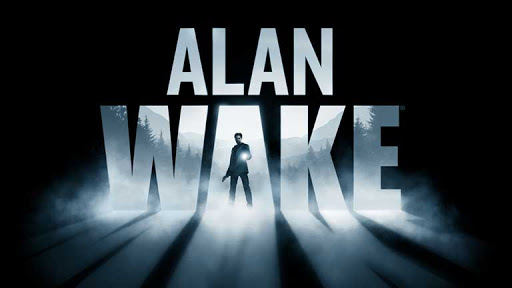
It is in this space between the dimensions — you might joke that it’s the Twilight Zone, as Remedy itself does — that Remedy and creative director Sam Lake find creative genius. You see, when we enter this unreal space — the realm of dreams, nightmares and simulations — Remedy gets to stretch its creative muscles. As Remedy exploits this space, we wind up with super weird scenes, akin to the dreamscapes of Ubisoft’s Far Cry games.
Like the scene where the real rock band Poets of the Fall plays as its alter ego, Old Gods of Asgard, in a comedic nightmare scene in Alan Wake 2, featuring the song Herald of Darkness. The attention to detail in this song — it was version No. 34 created for the game — and its integration into the gameplay is amazing.
The performance of the song at The Game Awards is one of those theatrical moments that stay alive inside my mind for a long time to come. It’s how people will remember this cultural moment for gaming. I would have loved to have been at the meeting where somebody at Remedy managed to stuff this crazy scene into the game and got approval from the sane people in the room.
Let’s also note the self-referential nature of Alan Wake 2. We have a fictional writer, Alan Wake, whose name rhymes with creative director Sam Lake, who is also the main writer. Lake’s likeness appears in the game (as FBI agent Alex Casey) and Lake is stuck in a kind of limbo for 13 years trying to get this game done while Alan Wake is stuck in the Dark Place trying to write himself out of his trap and find his wife, Alice, who is a photographer who has also gone missing. This is the part of the game where I just laugh because I know the writer or writers are just messing with my mind.
Navigating the space between dimensions
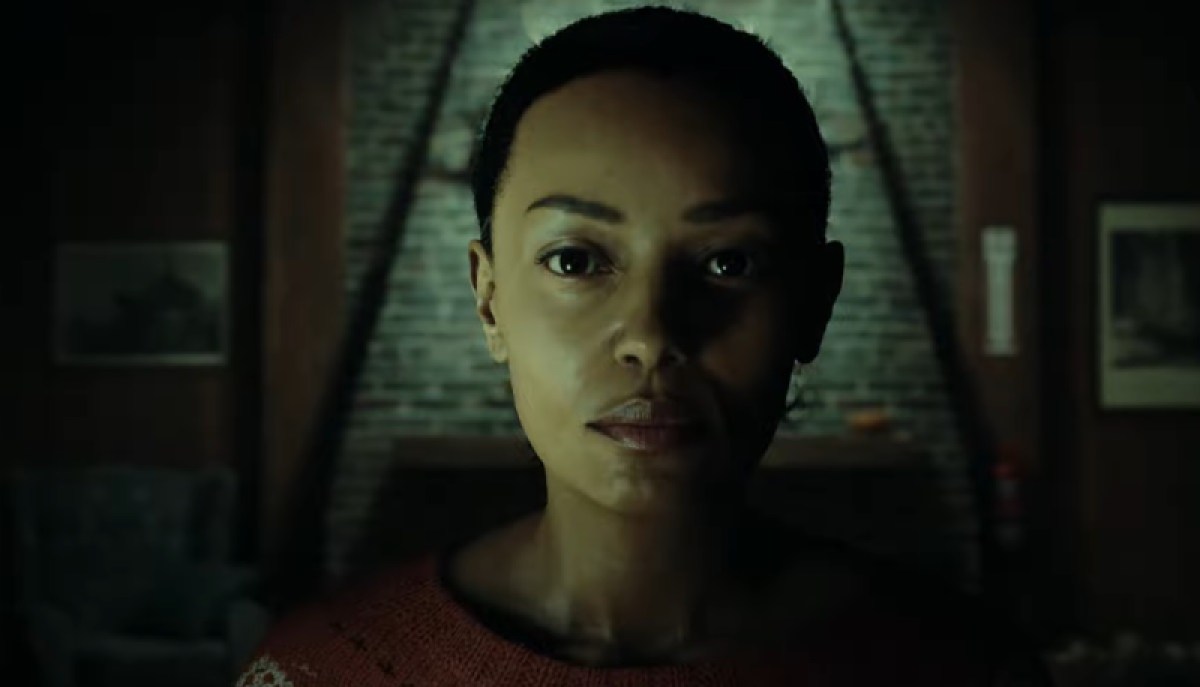
There are layers to the story — so many that Remedy had to innovate with how to help you follow the story threads between the dimensions, which intersect at certain points in time. You can travel between those dimensions by switching to those points in time, and you do this with magical, symbolic artifacts that you find in the game like an old-fashioned lamp and a device known as The Clicker.
These devices carry personal meaning for characters in the game as well as for Lake himself. He noted that The Clicker was a switch that his mother gave him as a child to help him go to sleep. It chased away the darkness.
Control of these magical devices is critical as you play as Wake or Saga Anderson, an FBI agent trying to unravel the mystery behind Wake’s disappearance and the strange connection between his writings and murders in the real world. And the critical boss fights occur at the points of intersection between the dimensions, which you can find by locating and using the magical artifacts. The stakes are high, as in some dimensions, or versions of reality, your loved ones are dead. In others, they’re alive.
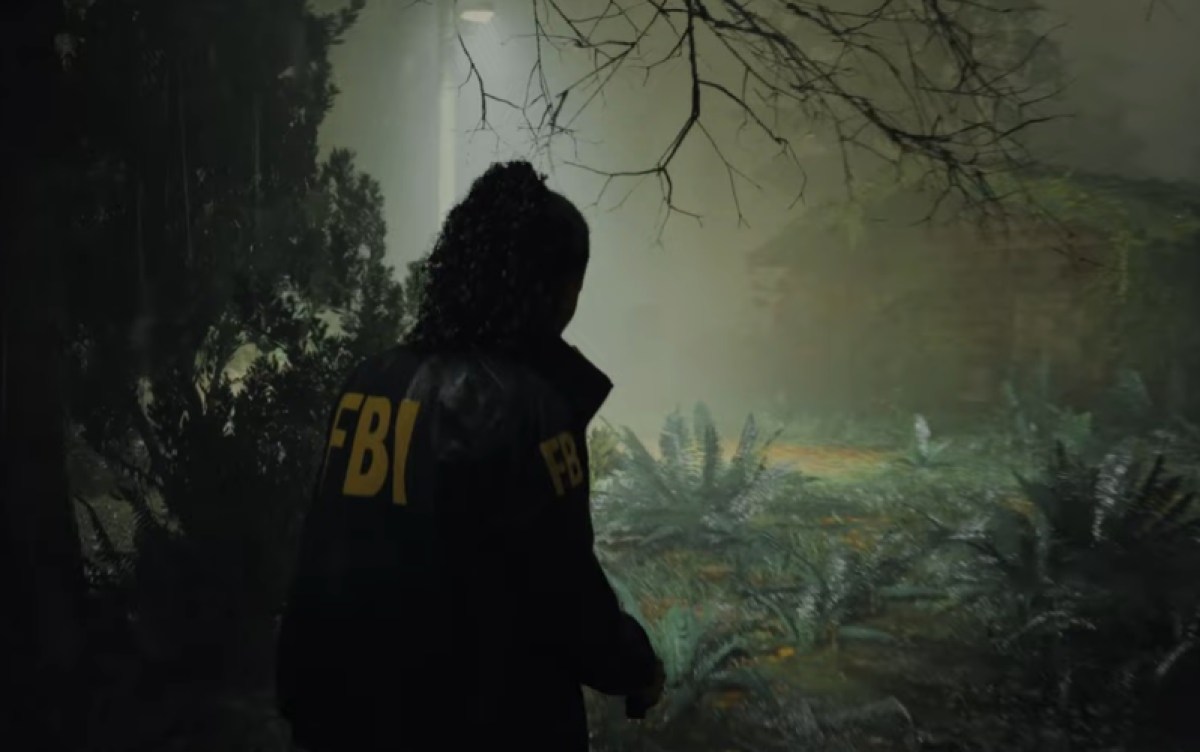
As you progress in the game, you can switch between the two main characters as you wish. I can’t imagine how complicated this made the game for the storytellers. To keep everything straight in her own head, Anderson uses another Remedy device, a visualization of an investigator’s clue board known as the Memory Space. Anderson uses this to draw connections between related events. As she uses this board to solve puzzles, she realizes she is entering the supernatural realm and has to solve it by stepping up with her own supernatural powers of deduction.
I enjoyed the Memory Space as one of the key ways to absorb what happens in different areas of the game. But it often has a mind of its own, as if it were a character or a computer. You feed your clues into it that you find in the real world, and it draws the connections on its own. And I like the message that the Memory Space — again, seeming like a character in the game — sends home to Anderson as she begins to question her own sanity.
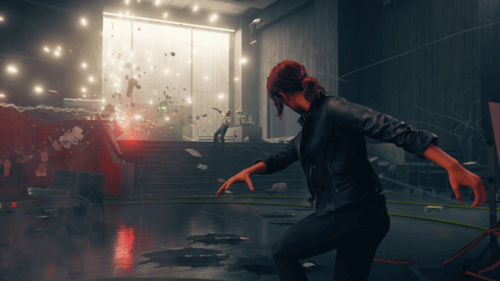
I once interviewed the creators of Quantum Break — a Remedy game involving time travel where the writers had to create graphics and flowcharts just to keep track of the events in the game, which were told out of order. And it looks like they just took that and made it a part of the game in Alan Wake 2. I have only encountered stories with this kind of layering of meaning in the works of Stephen King, who united all of his dimensions in his own self-referential master work, The Dark Tower series. And I suppose we’ve all experienced this kind of, uh, metaverse, in pop culture with the Marvel Cinematic Universe and works like Spider-Man: Across the Spider-Verse. Since, as director Lisa Joy explained in an interview with me, we’ve been trained by this pop art to understand multi-dimensional stories.
In this case, we’ve got the Remedy Connected Universe and a kind of “playable Stephen King novel.” I realize that sounds like marketing drivel, but it fits.
Creepy gameplay
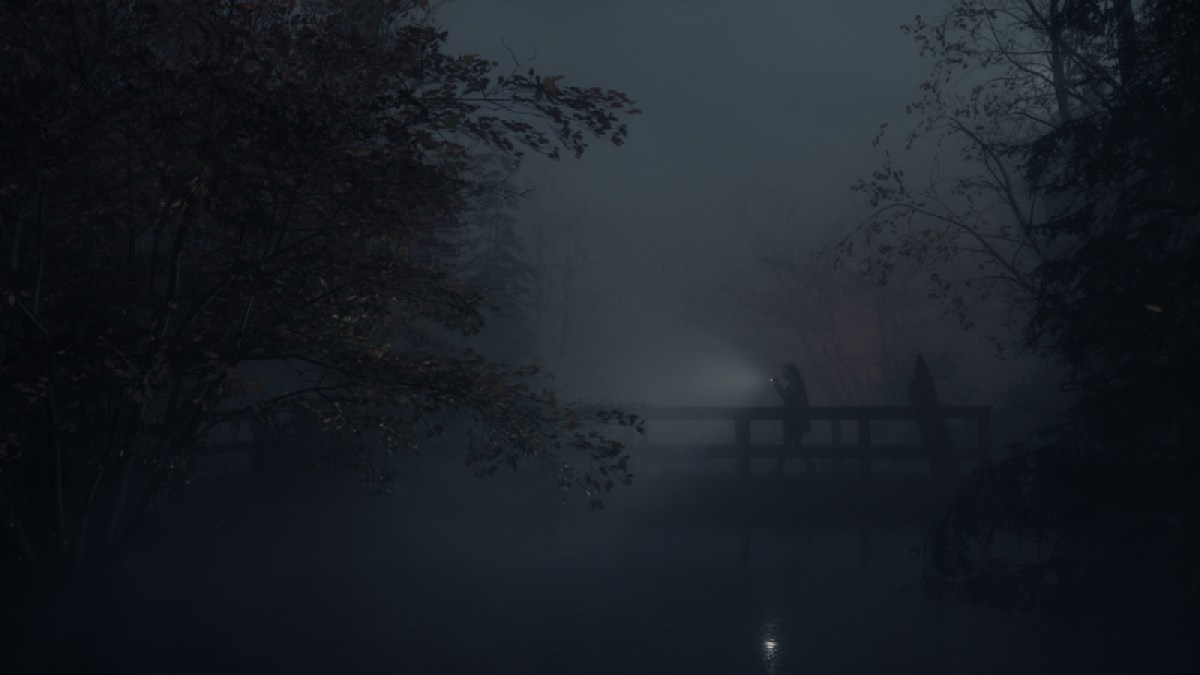
Now I fully realize that I’m veering off into the references and context around the game, but I’m not talking much about the gameplay itself.
While Alan Wake was a thriller, this game is outright horror. It’s creepy, with lots of horrifying images and jump scares. It has lots of blood and guts. A decrepit penis. Spooky slashers in the woods. It has an eclectic bunch of characters — like the Finnish janitor Ahti, who supplies you with safe havens of light in his janitor’s rooms. Ahti has one of the most remarkable voices (played by Martti Suosalo) I have ever heard in a video game character, and it’s funny to hear him speak in riddles.
Ahti gave a little respite, and the Finnish elements in the game were endearing, coming from a Finnish game studio that was trying to break down the fourth wall. To further break down that wall, there were scenes with live action in the game that made you feel like you were shifting through realities.
The horror, the horror
But I would have been fine if Remedy dialed down the horror a little. There were so many jump scares that I thought my face would melt. I’d get mini heart attacks when one of the many shadows would pop out of its zombie state and come after me with a pipe. However, I would still agree that horror was the right way to take this franchise as it elevated the intensity of the dread in the experience.
Part of the fear was that I was always running short on ammo. I could find weaponry like a flare gun, a shotgun, or a rifle. But eventually I was going to run out of ammo at exactly the wrong time.
But the game is far more than a series of jump scares. The range of emotion and gameplay in Alan Wake 2 is sweeping, with crazy party and musical scenes, nerve-racking shooter fights, and contemplative detective work. The graphics were amazing, particularly the contrast between light and shadow, and it was amazing how the environment played a role in the gameplay. There were many moments where you could witness an event or find a clue if you were standing in exactly the right place.
The performances of the characters/voice actors were superb. Melanie Liburd played Saga Anderson, Matthew Porretta was Alan Wake, (the late) James McCaffrey was Alex Casey, and Christina Cole was Alice Wake. They all had dramatic moments, as they played characters put into insane situations. I came to dread what was going to happen to them in this all-too-horrifying nightmare world.
What I really liked about the self-awareness that comes with this self-referential game is that Remedy understands that it is taking some risks with its audience, putting us into the shoes of the horror-stricken people going insane, and that they should be careful about that. And so I like how they took care to enable the characters to find a path back to the light and out of the darkness of mental illness.
Imperfection
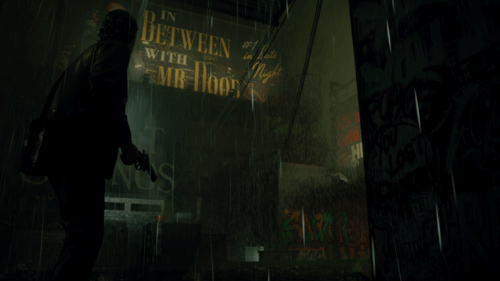
I have to say it’s not perfect. It has some impossibly complex puzzles. The game’s story lost me in some critical moments. This is OK since it’s such a big story spanning so much time. But in particular, I have no idea what the character Alex Casey was talking about much of the time as he was solving some kind of mystery in the subways of New York. Yes, he was in pursuit of a cult. But did this help the player accomplish a goal? Casey had a way of mumbling or starting mid-sentence that made it hard to follow. All I knew was that I had to trigger Casey’s monologues just to advance in the story. It’s a small nitpick in a game that made me think about so much.
Conclusion
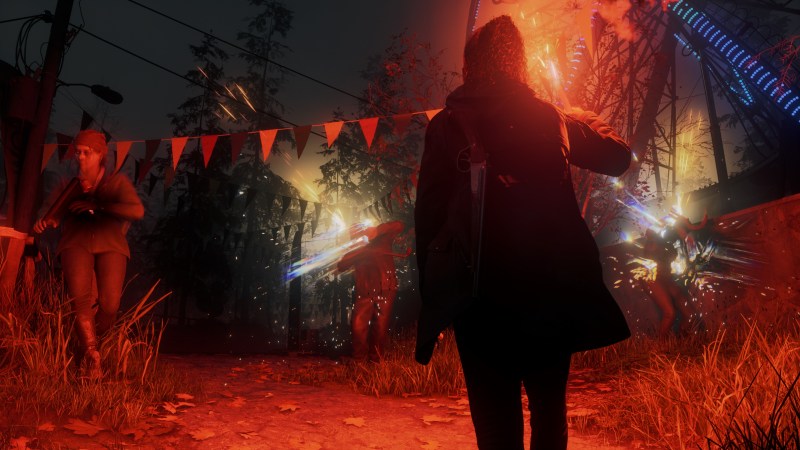
Lake has always been a good spokesman for the game. He talked about Remedy’s “dream game” a while back and said, “Where we are now is fiction becoming reality.” It’s kind of a cliche that you expect to hear from the lips of Alan Wake, but it’s a good description for what goes through you head as you play this outstanding game that messes with your mind but still leaves it in a better place than most horror games do. Call it a masterpiece or a work of art. Both apply. I rate the game as five stars out of five.

Disclosure: Remedy Entertainment provided me with a copy of the game for the purposes of this review.
GamesBeat’s creed when covering the game industry is “where passion meets business.” What does this mean? We want to tell you how the news matters to you — not just as a decision-maker at a game studio, but also as a fan of games. Whether you read our articles, listen to our podcasts, or watch our videos, GamesBeat will help you learn about the industry and enjoy engaging with it. Discover our Briefings.

